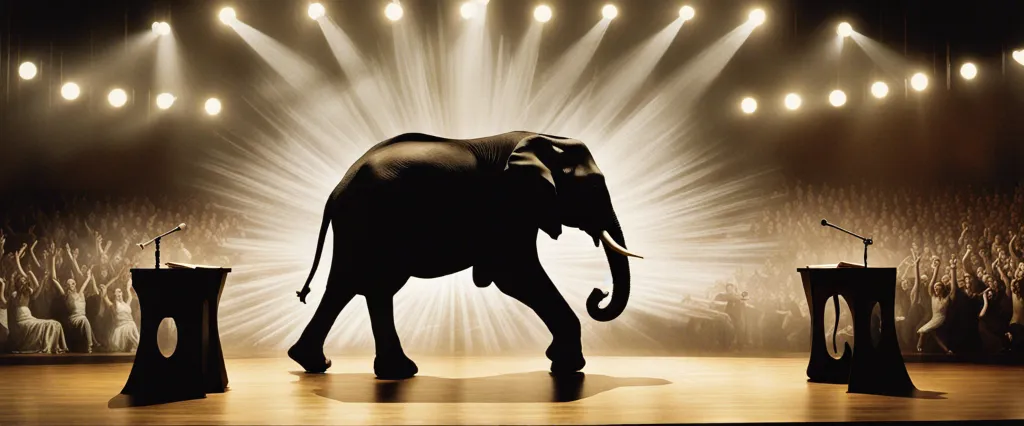
In the ever-evolving landscape of business and management literature, two prominent voices emerge, each offering unique insights and strategies for success. “Rework” by Jason Fried and “Who Says Elephants Can’t Dance” by Louis V. Gerstner Jr. delve into the depths of corporate leadership and shed light on their contrasting philosophies. While both authors have achieved remarkable success in their respective fields, their approaches, experiences, and perspectives diverge greatly. This comparative study aims to examine the central themes, strategies, and perspectives presented in these seminal works, uncovering the underlying principles that have shaped the modern business landscape.
Starting with “Rework,” Jason Fried, the co-founder of Basecamp, challenges traditional notions of work, urging readers to reevaluate established norms and embrace a unique approach to achieve their goals. With refreshing simplicity, Fried advocates for a streamlined approach to business, pushing boundaries and emphasizing the need for efficiency, simplicity, and adaptability. Through a collection of succinct and actionable advice, “Rework” transforms conventional wisdom, presenting unconventional ideas that have propelled Basecamp’s success.
On the other hand, “Who Says Elephants Can’t Dance” chronicles the captivating journey of Louis V. Gerstner Jr., the former CEO of IBM, as he maneuvers through the complex web of challenges that plagued the technology giant at the brink of collapse. Gerstner’s narrative unfolds with the determination and clarity of a seasoned leader, combining insightful anecdotes with strategic decision-making. The book offers a detailed account of Gerstner’s transformative tenure, focusing on the importance of cultural change, customer-centricity, and adaptability in reviving a seemingly doomed organization.
While both Fried and Gerstner have achieved remarkable levels of success in their respective careers, their books diverge significantly in terms of methodology, industry focus, and the challenges they address. Fried’s “Rework” appeals to entrepreneurs, startups, and small businesses, providing unconventional wisdom and practical advice on creating a lean, agile, and efficient organization. In contrast, Gerstner’s “Who Says Elephants Can’t Dance” offers a comprehensive analysis of organizational transformation within a large, established corporation, making it a valuable resource for leaders navigating complex corporate landscapes.
Throughout this comparative study, we will explore the underlying principles, methodologies, and key takeaways from both books, analyzing the viability and applicability of their recommendations in various business contexts. By delving deeper into their ideologies, we aim to extract valuable insights that can inform and shape contemporary leadership approaches. Join us on this journey of learning and discovery as we navigate the pages of “Rework” and “Who Says Elephants Can’t Dance” to unravel the secrets behind their authors’ triumphs and glean valuable lessons for driving success in the ever-evolving world of business.
Brief Summary of Two Books
Rework by Jason Fried
“Rework” by Jason Fried and David Heinemeier Hansson is a business book that challenges traditional ideas about entrepreneurship and offers unconventional advice on starting and running a successful business. The book offers a new perspective on work and entrepreneurship, encouraging readers to adopt a different approach to achieve their goals.
The authors emphasize the importance of simplicity, urging entrepreneurs to focus on the essentials rather than getting overwhelmed by unnecessary complexities. They emphasize the need to start small, iterate, and make frequent improvements along the way. The book encourages readers to question the status quo, and challenge conventional wisdom in order to find their own path to success.
Fried and Hansson also discuss the notion of productivity and its relationship with long working hours. They argue that effectiveness lies in prioritizing and making the most of limited time, rather than working endless hours. They advocate for a healthier work-life balance and emphasize the importance of rest and relaxation for better productivity.
The book also touches upon hiring, emphasizing the need to hire the right people who share the company’s vision and values. It advises against overcomplicating recruitment processes, and instead, suggests focusing on candidates’ skills and ability to get things done.
Furthermore, “Rework” challenges traditional business plans, suggesting that they often become outdated or irrelevant. Instead, the authors propose embracing change and adapting strategies as circumstances require.
Overall, “Rework” presents a refreshing perspective on entrepreneurship, advising readers to think differently about starting and running a business. It encourages simplicity, adaptability, and a focus on essential aspects of the business, providing practical insights and actionable advice along the way.
Who Says Elephants Can’t Dance by Louis V. Gerstner Jr.
Who Says Elephants Can’t Dance is a memoir written by Louis V. Gerstner Jr., the former CEO of IBM. The book provides a detailed account of Gerstner’s turnaround strategies and the challenges he faced in revitalizing the struggling company during the 1990s.
Gerstner recounts his arrival at IBM in 1993, when the company was experiencing significant financial losses and organizational dysfunction. He highlights the company’s deeply ingrained culture and bureaucratic structure, which hindered innovation and responsiveness to market changes.
The book emphasizes Gerstner’s efforts to change IBM’s culture and focus on customer needs. He implemented a series of bold initiatives, including restructuring the organization, streamlining processes, and shifting focus to the rapidly growing services sector. Gerstner also emphasized the importance of embracing technology trends, such as the emerging internet, to position IBM as a leader in the digital age.
Throughout the book, Gerstner reflects on the complex decisions he made, including layoffs and divestitures, and the challenges he faced in winning over skeptical employees and shareholders. He emphasizes the importance of leadership, teamwork, and communication in driving IBM’s successful transformation.
Ultimately, Who Says Elephants Can’t Dance provides valuable insights into how a struggling giant like IBM managed to reinvent itself and emerge as a dominant player in the technology industry. It serves as a guide for managers and leaders looking to navigate change and drive organizational transformation.
Comparison between Two Books

Similarities in Business Strategy
Both “Rework” by Jason Fried and “Who Says Elephants Can’t Dance” by Louis V. Gerstner Jr. discuss the importance of re-evaluating and rethinking business strategies in order to achieve success. Despite addressing different industries and contexts, there are notable similarities in their approach towards business strategy.
1. Embracing Simplicity: Both books advocate for simplicity as a key principle in business strategy. They emphasize the need to strip away unnecessary complexity and focus on core priorities. They argue that simplicity enables agility, improvisation, and adaptability, allowing businesses to respond quickly to changing market dynamics.
2. Prioritizing Customer Experience: Fried and Gerstner stress the significance of delivering an exceptional customer experience. They underscore the importance of truly understanding customer needs and integrating them into every facet of the business. Both books highlight the need for businesses to continuously improve their products and services based on customer feedback.
3. Challenging Traditional Approaches: Both authors suggest challenging conventional wisdom and finding unconventional solutions to business challenges. They encourage thinking outside the box and challenging established norms and practices. By doing so, businesses can find unique opportunities, disrupt industries, and differentiate themselves from competitors.
4. Agile Decision-Making: Both books highlight the importance of agility in business decision-making. They emphasize the need to be responsive, nimble, and adaptable, particularly in fast-paced and evolving market environments. By adopting an agile approach, businesses can quickly test ideas, learn from failures, and adjust strategies accordingly.
5. Employee Empowerment: Fried and Gerstner emphasize the significance of empowering employees in shaping business strategy. They stress the need to foster a culture of trust, autonomy, and accountability. Both books highlight the positive impact of giving employees the freedom to innovate, make decisions, and take ownership of their work.
6. Continuous Learning and Improvement: Both authors advocate for a culture of continuous learning and improvement. They recognize that mistakes should be embraced as learning opportunities rather than ridiculed. Businesses should constantly experiment, iterate, and adapt their strategies based on data and feedback.
In summary, “Rework” by Jason Fried and “Who Says Elephants Can’t Dance” by Louis V. Gerstner Jr. share several similarities in their approach to business strategy. They both emphasize simplicity, customer-centricity, challenging traditional thinking, agility, employee empowerment, and continuous learning and improvement as vital elements for achieving success in today’s dynamic business landscape.
Divergences in Business Strategy
Rework by Jason Fried and Who Says Elephants Can’t Dance by Louis V. Gerstner Jr. are two influential business books that offer different perspectives on business strategy. While both authors provide valuable insights based on their experiences, their approaches and recommendations diverge in several key areas.
One major divergence can be found in their views on organizational structure. In Rework, Fried challenges the traditional notion of hierarchy and emphasizes the advantages of smaller, leaner teams. He argues for a flat organizational structure that fosters collaboration, self-direction, and a focus on individual specialties. Contrarily, Gerstner’s book, Who Says Elephants Can’t Dance, focuses on his turnaround efforts in IBM, emphasizing the importance of a strong, centralized leadership structure. He highlights the need for a cohesive management team and a clear chain of command to successfully implement change in a large, complex organization.
Another divergence lies in their perspectives on risk-taking and innovation. Fried, in Rework, encourages entrepreneurs and businesses to embrace experimentation, iterate quickly, and take calculated risks. He believes that failure is a necessary part of the learning process and that it is essential to challenge conventional wisdom. Gerstner, on the other hand, in Who Says Elephants Can’t Dance, emphasizes the need for a more risk-averse approach when dealing with major changes in established organizations. He argues for a careful evaluation of potential risks and rewards, emphasizing the importance of thorough planning and analysis before executing any major strategy.
Furthermore, the two books diverge in how they approach the concept of work-life balance. Fried, in Rework, criticizes the traditional notion of long work hours and advocates for creating a healthy work-life balance. He emphasizes the need to prioritize tasks efficiently, minimize distractions, and leave time for personal pursuits outside of work. Gerstner, in Who Says Elephants Can’t Dance, acknowledges the demanding nature of leading a major transformation but places less emphasis on work-life balance. He emphasizes the need to commit fully to the turnaround effort, even if it requires long hours and personal sacrifices.
In summary, while both Rework by Jason Fried and Who Says Elephants Can’t Dance by Louis V. Gerstner Jr. offer valuable insights into business strategy, they diverge in their perspectives on organizational structure, risk-taking, and work-life balance. Fried advocates for a flatter organization, greater risk-taking, and a healthier work-life balance, whereas Gerstner emphasizes centralized leadership, a more conservative approach to risk, and a strong commitment to organizational turnaround.

Conclusion
Both Rework by Jason Fried and Who Says Elephants Can’t Dance by Louis V. Gerstner Jr. offer valuable insights and perspectives in their respective fields. The choice between these two books ultimately depends on the reader’s interests and goals.
If you are interested in entrepreneurship, creativity, and unconventional thinking, Rework by Jason Fried is the more worthy book for you. Rework challenges traditional business practices and provides practical advice on how to build a successful company. Fried’s book focuses on embracing simplicity, questioning traditional norms, and offering counterintuitive strategies for building a business. It encourages readers to think differently and approach entrepreneurship with a fresh perspective.
On the other hand, if you are interested in leadership, change management, and the transformation of large organizations, Who Says Elephants Can’t Dance by Louis V. Gerstner Jr. is the more worthy book. Gerstner, the former CEO of IBM, recounts his experiences leading one of the world’s largest companies through a major turnaround. This book offers valuable insights into managing change, building effective teams, and leading with vision and determination. Gerstner’s book is an inspiring account of how he transformed a struggling company and offers valuable lessons for leaders in any industry.
In conclusion, both Rework by Jason Fried and Who Says Elephants Can’t Dance by Louis V. Gerstner Jr. have their merits. The choice between these two books depends on your specific interests and whether you are focusing on entrepreneurship or leadership in large organizations.

